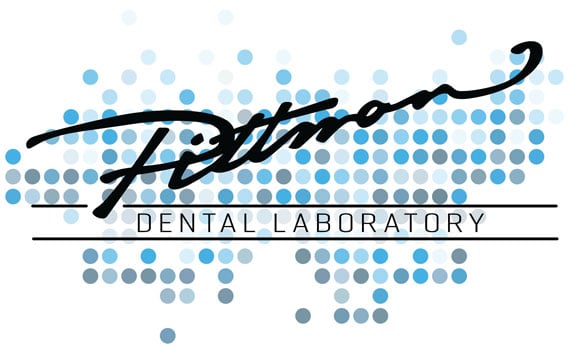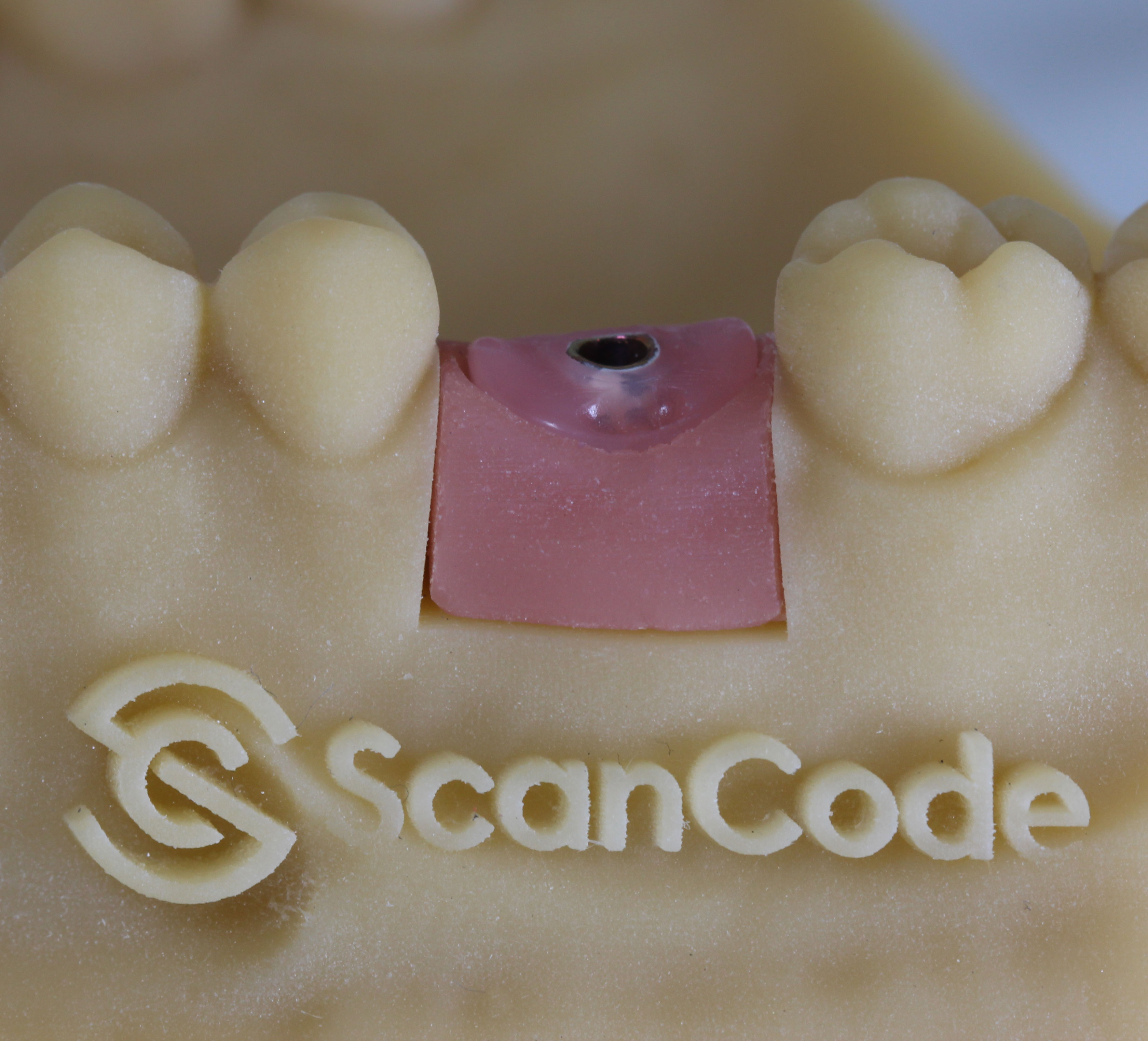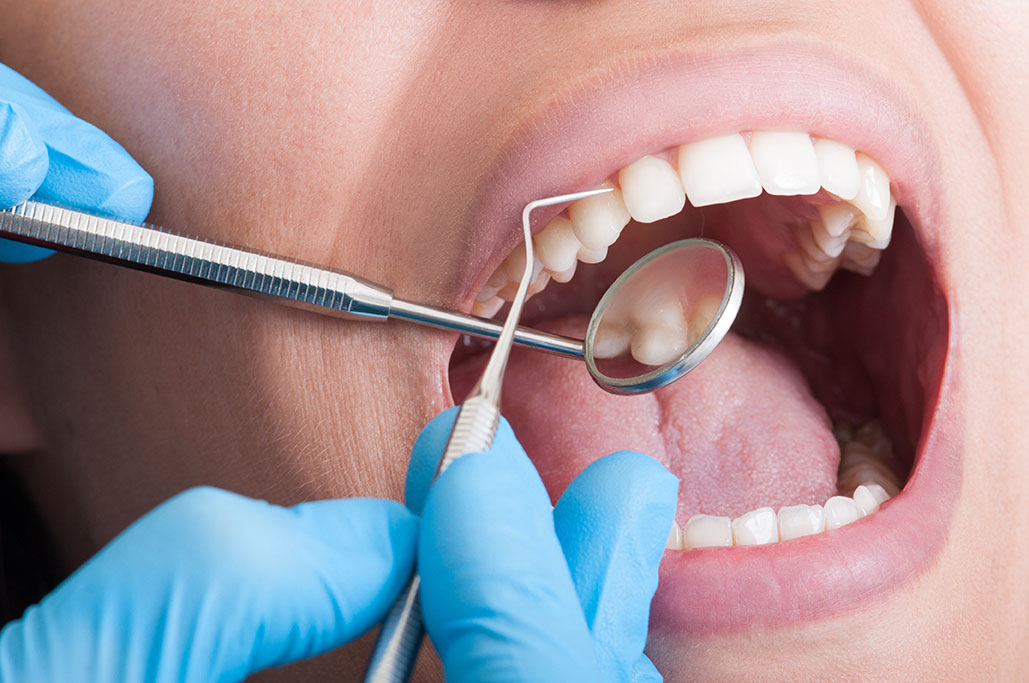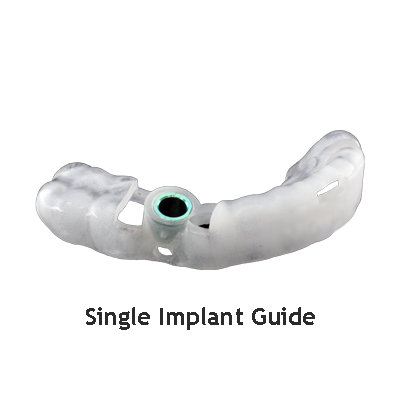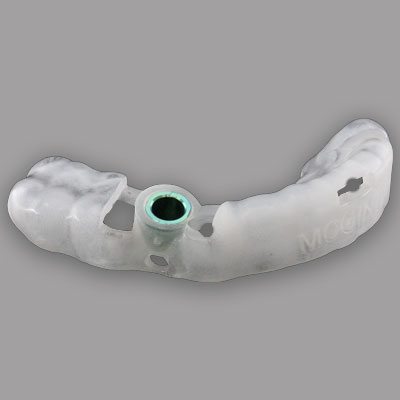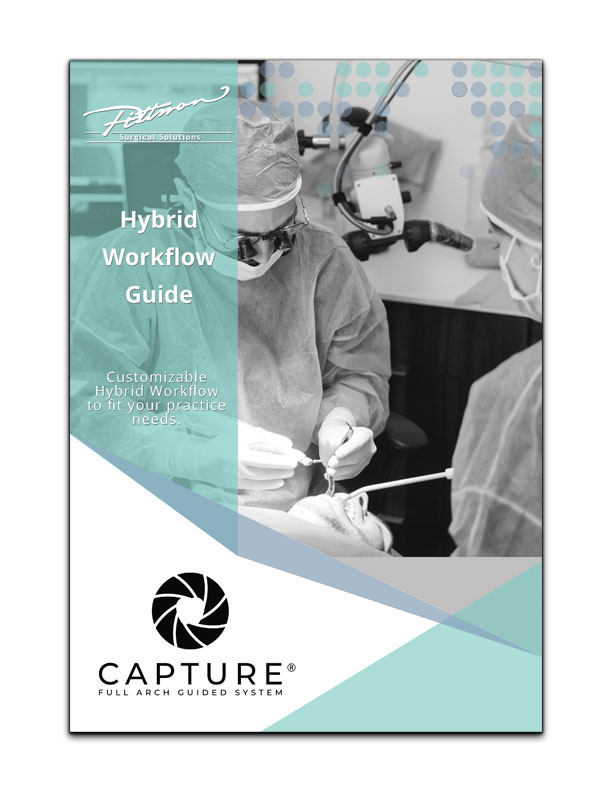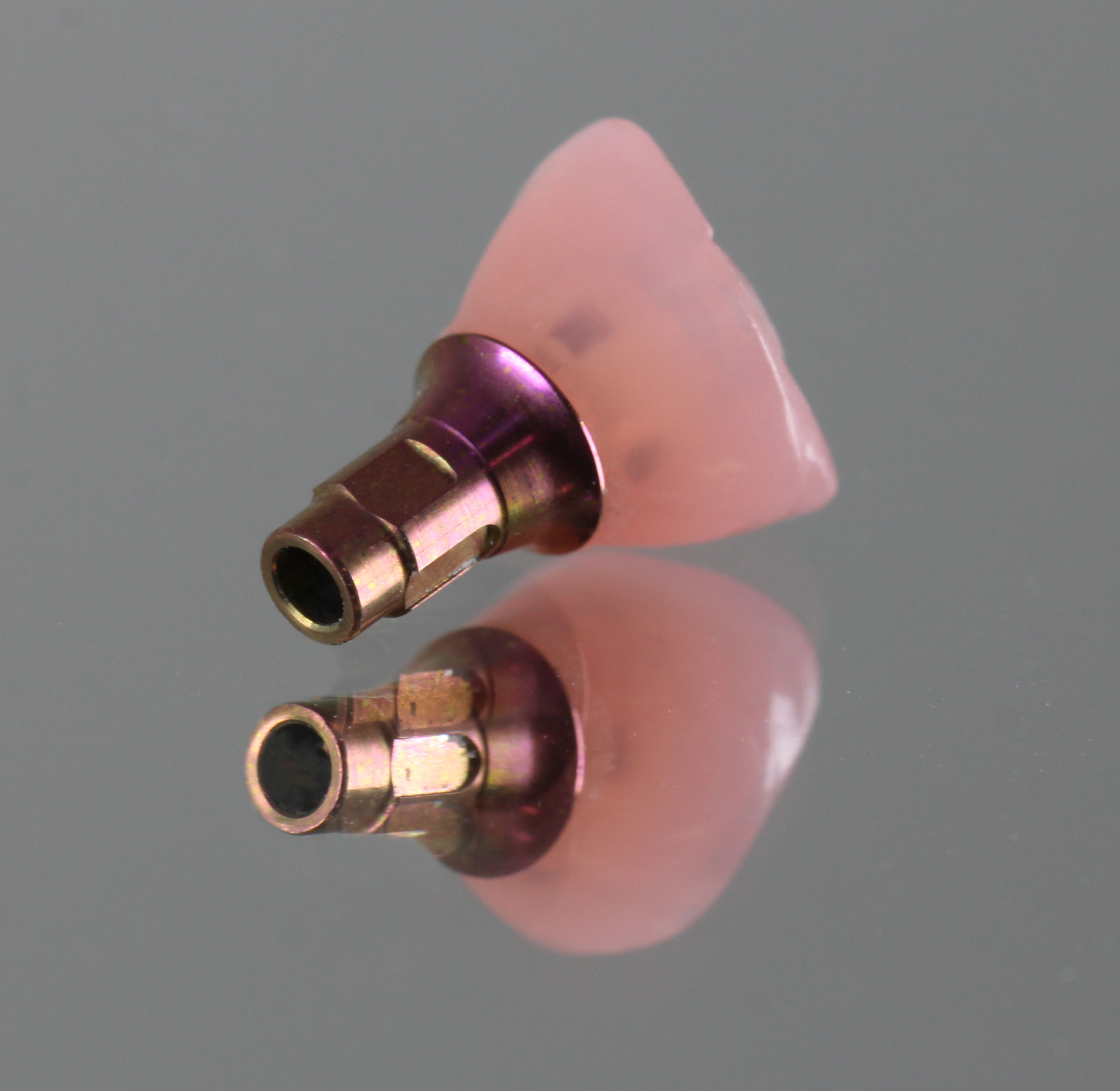
At Pittman Dental Laboratory, we're driven by a relentless pursuit of progress. For over 50 years, we've been at the forefront of research and development in the dental industry, crafting solutions that elevate the quality of patient care. Our commitment to innovation extends beyond materials and techniques; it's about creating entirely new possibilities for dentists and their patients.
One such example is ScanCode®, a revolutionary product that is transforming the world of implant dentistry. Traditionally, implant dentists have relied on conventional round healing abutments. While these serve their purpose, they leave behind a round opening in the gum tissue. This can lead to a number of challenges, including aesthetic concerns and difficulty achieving optimal implant positioning during the restorative phase.
ScanCode® takes a groundbreaking approach. This innovative healing abutment features an anatomically contoured design that actively reshapes the gum tissue during the healing process. The result? A natural-looking emergence profile that seamlessly integrates with the surrounding soft tissue.
But the benefits of ScanCode® go far beyond aesthetics. The design incorporates interproximal concavities that provide crucial support for bone or bone grafting material. This translates to improved long-term stability and a more predictable foundation for the final restoration.
The advantages of ScanCode® extend to every member of the dental care team:
- Implant Surgeons: Experience greater control over implant positioning and achieve optimal emergence profiles.
- Restorative Dentists: Benefit from a pre-shaped emergence profile that simplifies the restoration process and enhances long-term outcomes.
- Pittman Dental Laboratory: Work with a foundation that facilitates a more natural and aesthetically pleasing final restoration.
- Patients: Enjoy a superior aesthetic outcome and potentially experience a more comfortable healing process.
ScanCode® is just one example of how Pittman Dental Laboratory is pushing the boundaries of dental technology. We believe in the power of innovation to transform patient care, and we're dedicated to developing solutions that empower dental professionals to achieve exceptional results.
If you're looking for a partner who shares your commitment to excellence, we invite you to explore the full range of innovative products and services offered by Pittman Dental Laboratory. Together, let's shape the future of a healthier smile. For more information about ScanCode®
Read More
Topics:
Oral Surgeon,
Focal Point,
Dental Technology,
ScanCode,
CBCT Scan,
STL File
Dental implants are a gold standard for replacing missing teeth, offering patients a natural-looking and long-lasting solution. But if you're a general practitioner dentist, you might hesitate to offer implant procedures in-house. Perhaps you lack the perceived expertise or the additional equipment. However, with the right tools and training, you can easily expand your practice and revenue stream by providing both single and multiple implant placements for your patients.
Read More
Topics:
marketing your practice,
aquiring new patients,
Dental Implants,
Focal Point,
Dental Technology
Dental implants are a popular and effective choice for replacing missing teeth. However, the success of dental implants depends on a number of factors, including the healing process of the tissues around the implant. Traditional healing abutments are often round or cylindrical in shape, which can lead to challenges in achieving optimal gum tissue contouring.
Read More
Topics:
intraoral scanner,
Dental Implants,
Focal Point,
All on X,
ScanCode
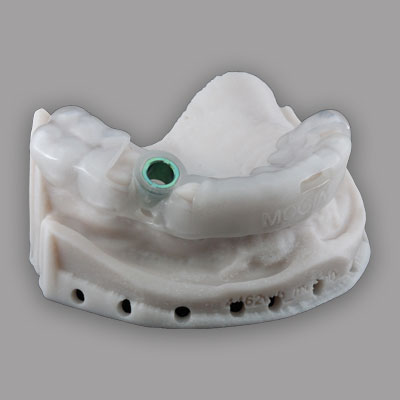
Dental implant procedures have undergone significant advancements in recent years, offering both dentists and patients innovative options for tooth replacement. Two primary approaches have emerged in the world of implantology: guided dental implant systems and freehand dental implants. At Pittman Dental Laboratory, we have witnessed the evolution of these techniques, each presenting its unique set of advantages and challenges.
Guided Dental Implant Systems:
Guided dental implant systems have gained popularity for their precision and predictability. This method involves the use of 3D imaging technology to create a detailed digital map of the patient's oral anatomy. Through computer-guided planning, the dentist can precisely determine the ideal implant placement and angulation, minimizing the margin for error.
Positive Aspects:
1. Enhanced Precision: One of the key advantages of guided systems is the high level of accuracy they provide. Dentists can achieve precise implant placement, reducing the risk of damage to surrounding structures.
2. Shorter Procedure Time: With a pre-determined surgical plan, the actual implant placement procedure tends to be quicker, resulting in reduced chair time for the patient and less discomfort.
3. Predictable Outcomes: Guided implant systems allow for a more predictable outcome, improving the long-term success of the implant. This is particularly beneficial for complex cases or patients with compromised bone density.
Negative Aspects:
1. Learning Curve: Dentists need a system to follow to become proficient in using guided systems. At Pittman Dental Laboratory, our implant team guides the Dentist from beginning to end with online case reviews, onsite facial analysis, drill reports, implant reports and chairside assistance if needed. Dentists can also start with one or two implants with our Focal Point® system before going on to Capture® our all on X guided system.
Freehand Dental Implants:
Freehand dental implant procedures rely on the dentist's experience, skill, and tactile feedback during surgery. This traditional approach allows for greater flexibility and adaptability during the implant placement process.
Positive Aspects:
1. Cost-Effective: Freehand dental implant procedures generally require less investment in technology and training. This makes them a more accessible option for dental practices with budget constraints.
2. Experience-Dependent: Dentists with extensive experience in implantology may find the freehand approach more intuitive. The tactile feedback during surgery allows for on-the-spot adjustments based on the patient's unique anatomy.
Negative Aspects:
1. Limited Precision: The main drawback of freehand implant placement is the potential for less precise outcomes compared to guided systems. This can lead to suboptimal aesthetic results and increased risk of complications.
2. Extended Procedure Time: Without the aid of computer-guided planning, the dentist may spend more time during the surgery assessing and adjusting, potentially leading to longer procedure times and increased patient discomfort.
Conclusion:
Choosing between guided and freehand dental implant procedures involves weighing the pros and cons based on individual patient cases, practitioner expertise, and the financial considerations of the dental practice. While guided systems offer unparalleled precision, freehand techniques provide a more cost-effective and experience-dependent alternative. Ultimately, the decision rests on the dentist's comfort level, training, and commitment to delivering the best possible outcomes for their patients.
Read More
Topics:
Oral Surgeon,
Focal Point,
Guided surgery,
Capture,
All on X
Title: Promising Experimental Medicine in Japan May Revolutionize Dentistry
Read More
Topics:
Dental Implants,
Focal Point,
Guided surgery,
Capture,
All on X,
Dental Technology
When it comes to dental surgery, precision is paramount. Whether you're a dentist looking to provide your patients with the best care possible with less chair time or a patient seeking a seamless dental experience, Pittman Surgical Solutions has you covered. We provide many options for dentists to choose from with our innovative dental surgical guides.
What Are Dental Surgical Guides?
Dental surgical guides are essential tools that enhance the accuracy and predictability of dental procedures, including dental implant placements, extractions, and various other oral surgeries. These guides are custom-designed for each patient, ensuring that the treatment plan aligns perfectly with their unique dental anatomy.
Read More
Topics:
Dental Implants,
Oral Surgeon,
Focal Point,
Guided surgery,
Capture,
All on X,
CAD/CAM
In recent years, implant dentistry has witnessed a significant surge in patient demand. People are increasingly seeking dental implants as a long-lasting solution for missing teeth, and this trend presents a golden opportunity for general practitioners to expand their services and meet this growing need.
Read More
Topics:
aquiring new patients,
Dental Implants,
Focal Point
Dental implants can offer several benefits that can positively impact a person's health. Here are 7 ways dental implants can improve overall health:
Read More
Topics:
Dental Implants,
Oral Surgeon,
Focal Point,
Guided surgery,
All on X
When it comes to dental implant placement, dentists and oral surgeons have two primary approaches: guided and non-guided. Understanding the difference between these methods is crucial for professionals to effectively communicate with their patients and ensure a successful outcome. In recent years, guided implant placement has gained popularity due to its numerous advantages and improved patient experiences.
Read More
Topics:
Dental Implants,
Oral Surgeon,
Focal Point,
Guided surgery,
Capture,
hybrid workflow,
All on X
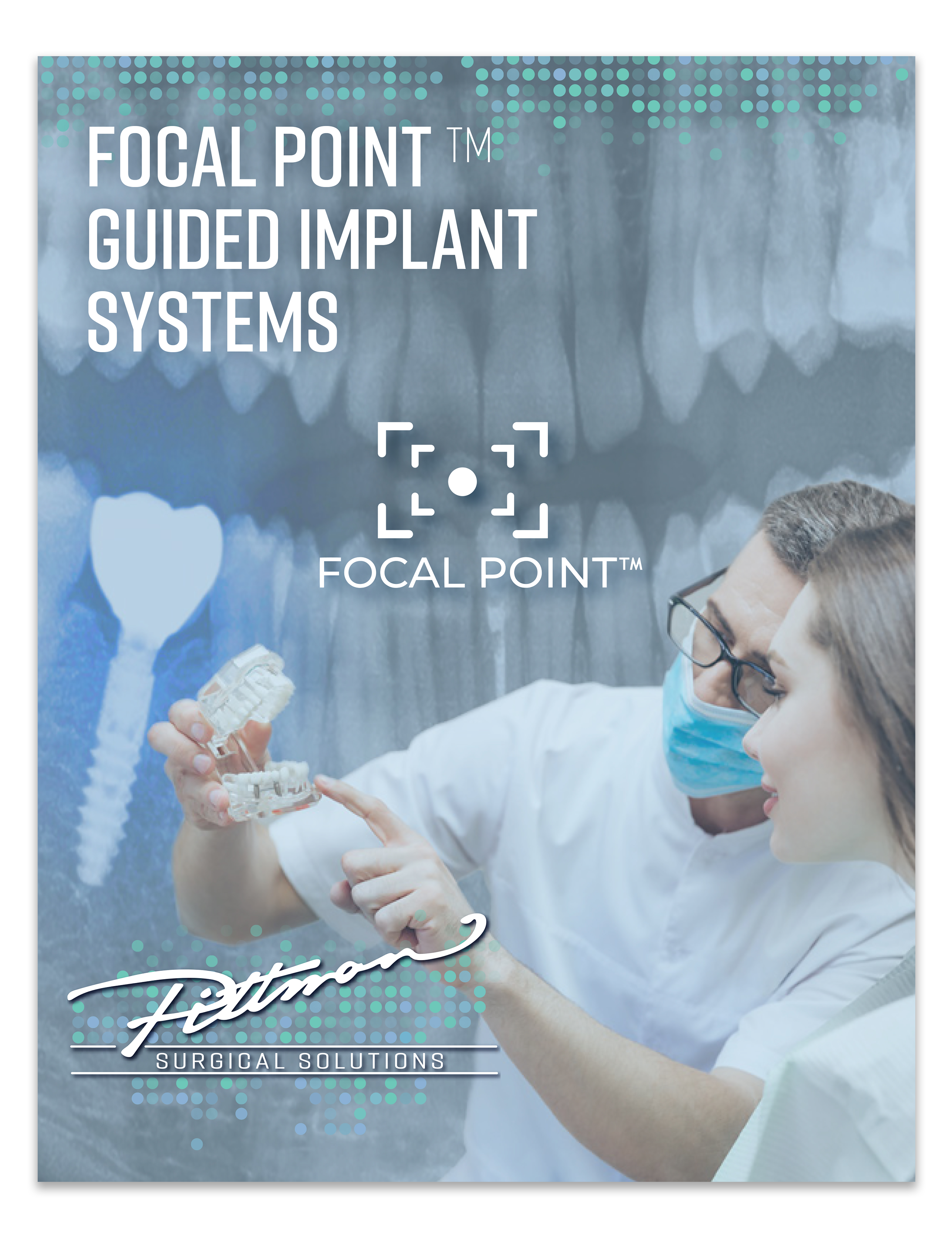
When a patient decides to get All-on-4 dental implants, which is a technique used to restore a full arch of teeth, they will typically go through several steps. Here's a general overview of the process:
1. Initial Consultation: The patient will schedule an initial consultation with a qualified dentist or oral surgeon who specializes in dental implant procedures. During this consultation, the dentist will assess the patient's oral health, evaluate their jawbone density and structure using X-rays or CT scans, and discuss their dental history and expectations.
2. Treatment Planning: Based on the evaluation, the dentist will create a customized treatment plan for the patient. This includes determining the number of implants required, identifying the optimal implant positions, and discussing the materials to be used for the prosthetic teeth.
3. Preparatory Procedures (if necessary): In some cases, patients may require preparatory procedures before the implant surgery. This can include tooth extractions, bone grafting to enhance the jawbone density, or treatment for any existing oral health issues like gum disease.
4. Implant Surgery: On the day of the surgery, the patient will be given anesthesia or sedation to ensure their comfort. The dentist will then surgically place the dental implants into the jawbone. The All-on-4 technique involves using four implants per arch, strategically positioned to maximize support and stability.
5. Temporary Prosthesis: Following the implant surgery, a temporary prosthesis (denture or bridge) will be attached to the implants. This temporary restoration allows the patient to have functional teeth while the implants integrate with the jawbone during the healing period, which can take a few months.
6. Healing and Osseointegration: Over the next few months, the implants will gradually fuse with the surrounding jawbone through a process called osseointegration. This provides a strong foundation for the permanent prosthesis.
7. Final Prosthesis Placement: Once the osseointegration is complete, the patient returns to the dentist for the placement of the final prosthesis. This prosthesis is custom-made to match the patient's natural teeth in terms of color, shape, and size. The dentist will attach the prosthesis securely to the implants, ensuring proper fit and aesthetics.
8. Follow-up Care: After the All-on-4 procedure, the patient will have follow-up appointments with the dentist to monitor their healing progress and ensure the long-term success of the implants. Regular check-ups and proper oral hygiene practices are crucial to maintaining the health of the implants and prosthesis.
It's important to note that while the above steps provide a general outline, the exact process may vary depending on the patient's individual needs and the specific protocols followed by the dentist or oral surgeon.
Read More
Topics:
aquiring new patients,
Dental Implants,
Oral Surgeon,
Focal Point,
Guided surgery
